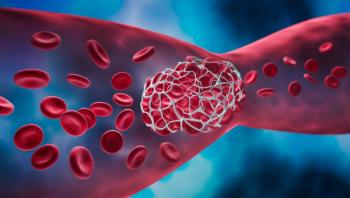
Switching to Extended Half-Life Therapies Improves Hemophilia Care, but Raises Short-Term Costs
Switching to extended half-life from standard half-life therapies for hemophilia enhances treatment adherence and reduces infusion frequency, despite initial cost increases.
Switching from standard half-life (SHL) to extended half-life (EHL) clotting factor therapies for those with hemophilia led to
For those living with hemophilia A (HA) and B, regular prophylactic infusions of clotting factor VIII (FVIII) or IX (FIX) are critical in preventing bleeding episodes and long-term complications, study authors shared.
SHL therapies, the traditional treatment, require frequent dosing—typically three times a week for FVIII and twice weekly for FIX. These treatments rapidly increase clotting factor levels, but the effect fades quickly, requiring consistent re-administration.
EHL therapies have shown a much more significant advancement in hemophilia care. These agents
EHL treatment for HA typically involves twice-weekly injections, while patients with HB may only need infusions once or twice per week.
Clinical trials and real-world studies have shown that switching from SHL to EHL therapies improves treatment adherence and reduces annual bleeding rates.
Some studies have also reported a drop in clotting factor use—ranging from 13% to 26% for FVIII and 15% to 50% for FIX—though findings have varied. The economic impact of the switch remains less clear, as different studies have reported both increased and decreased costs following the transition.
In this recent study conducted in Finland, researchers aimed to clarify these outcomes by examining real-world data on costs, treatment patterns and clinical results among adults with hemophilia from 2016 to 2021.
The study used national healthcare databases and electronic health records from Finland’s five university hospitals to identify adults (aged 18 or older) with HA or HB who had at least one hospital visit during the study period. Patients with inhibitors, unknown inhibitor status, use of Helimbra (emicizumab) or no clotting factor use were excluded.
The study compared two patient groups: those who switched from SHL to EHL clotting factor concentrates (CFCs) and those who did not. Researchers tracked treatment adherence, bleeding rates, healthcare use and medication costs. The analysis included paired t-tests and chi-square tests to compare outcomes before and after switching.
Out of 273 adults with HA and HB, most who switched to EHL therapy had severe disease and were followed for an average of two to four years after transitioning. Among HA patients, switching to EHL resulted in a reduced infusion frequency—down from three to two times per week—but a roughly 18% increase in clotting factor use.
For HB patients, they experienced a 28% reduction in factor use after switching. Bleeding episodes typically declined after the transition, especially in patients over 30 years old, although not all reductions were statistically significant.
Treatment adherence also improved significantly among HA patients who switched to EHL therapy.
Healthcare costs and visit frequency increased in both HA and HB folks following the switch. This was largely attributed to more regular monitoring and the higher cost per unit of EHL products.
However, the authors noted that these increases could level off over time as dosing becomes more personalized and clinical practices stabilize.
This study is prominent as it's the first comprehensive nationwide evaluation of the real-world impact of switching from SHL to EHL therapies in Finland. One major strength of the research is its use of actual patient-level data on clotting factor use, costs and clinical outcomes.
However, some limitations exist. The follow-up period was relatively short, particularly for hemophilia B patients, which may have captured only the early phase of treatment adjustments. In addition, variations in adherence, reasons for switching and self-reported bleeding episodes could leave biased results.
Past these limitations, the findings suggest that switching to EHL therapies offers clear benefits in terms of reducing infusion burden and improving adherence.
While short-term costs may rise, especially for folks with hemophilia B, the authors expressed that long-term outcomes could justify the investment. They recommended further research with longer follow-up periods to better understand the full impact of EHL therapy on treatment costs and patient quality of life.
Newsletter
Get the latest industry news, event updates, and more from Managed healthcare Executive.





















































